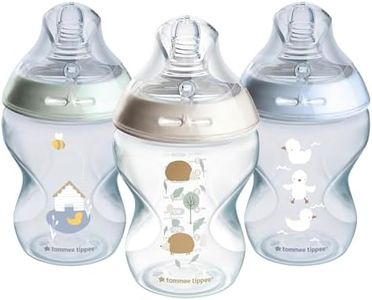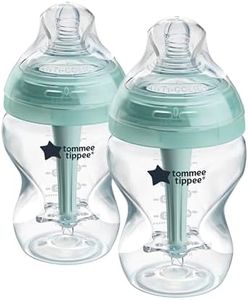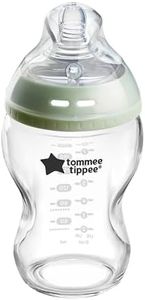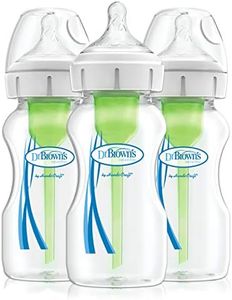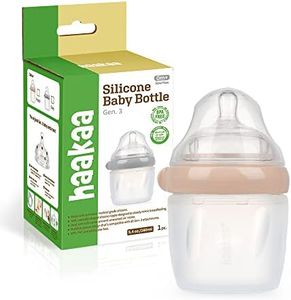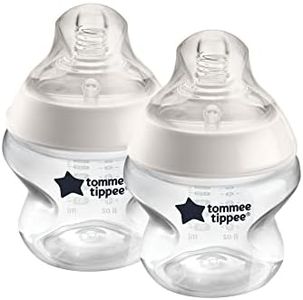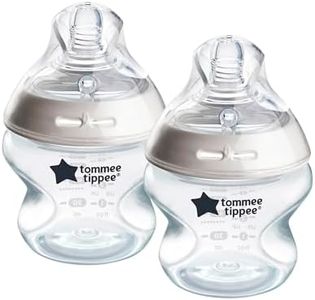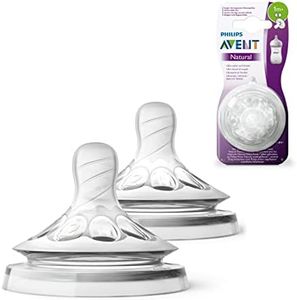We Use CookiesWe use cookies to enhance the security, performance,
functionality and for analytical and promotional activities. By continuing to browse this site you
are agreeing to our privacy policy
10 Best Slow Flow Nipple Bottle
From leading brands and best sellers available on the web.Buying Guide for the Best Slow Flow Nipple Bottle
Choosing the right slow-flow nipple bottle is all about matching your baby's feeding needs and developmental stage. Slow-flow nipples are designed to let milk or formula out at a slower rate, which can help reduce the risk of choking, gas, and spitting up for young infants who are learning how to feed. Think about your baby's age, sucking strength, and how calmly they feed. Also, consider features that make your life easier, like how simple it is to clean the bottle or switch nipples.Nipple Flow RateNipple flow rate refers to how quickly milk or formula passes through the nipple hole. Slow-flow nipples have smaller holes, allowing less liquid to come out at a time, and are especially important for newborns who are still learning to coordinate their sucking, swallowing, and breathing. Flow rates often range from 'preemie' or 'newborn' (slowest) through to 'fast flow' types for older babies. You can identify flow rates by numbers or stages on packaging. If your baby is coughing, gagging, or milk leaks from their mouth, the flow may be too fast – stick with the slowest rate for newborns and move up as your baby grows and feeds more efficiently.
Nipple ShapeNipple shape can mimic a natural breast or be a traditional narrow shape. Some babies prefer a bottle nipple that's shaped like their mother's nipple, especially if they're switching between breastfeeding and bottle feeding, as it encourages a similar latch. Others may feed just fine with a more basic, slim nipple. Pay attention to your baby's response: if they have difficulty latching or seem uncomfortable, you might consider trying different shapes to see which they prefer.
Material SafetyBottles and nipples are usually made from silicone or latex, and the bottle itself can be plastic, glass, or stainless steel. Silicone nipples are more durable and tend to be odorless and tasteless, while latex is softer but can wear out faster and some babies may develop sensitivities. Always ensure the materials are BPA-free and meet safety standards. Consider your baby's needs and any sensitivity or allergies when choosing.
Anti-Colic FeaturesSome bottles have venting systems built into the nipple or bottle to reduce the amount of air your baby swallows, which can help prevent gas, fussiness, and colic. The effectiveness of these features can vary, but they are often helpful for babies who are particularly prone to spit-up or discomfort after feeding. If your baby seems gassy or fussy, choosing a bottle with reliable anti-colic features could improve their feeding experience.
Ease of CleaningBottles and nipples need thorough cleaning, so the design can make a huge difference. Simple designs with fewer parts are often easier to wash by hand or in a dishwasher. Removable nipples and wide-neck bottles help you reach all the nooks and crannies. If cleaning is difficult for you or you’re feeding on the go, opt for bottles and nipples that are straightforward to disassemble and clean quickly.
CompatibilitySome bottles and nipples are compatible only with each other, while others offer cross-compatibility between brands. If you already have a collection of bottles, check if new nipples will fit, or vice versa. Also, if you use breast pumps, some bottles are designed to connect directly for easier milk collection and storage. Think about how you plan to use the bottle system in daily life and look for compatibility to make feeding more convenient.
